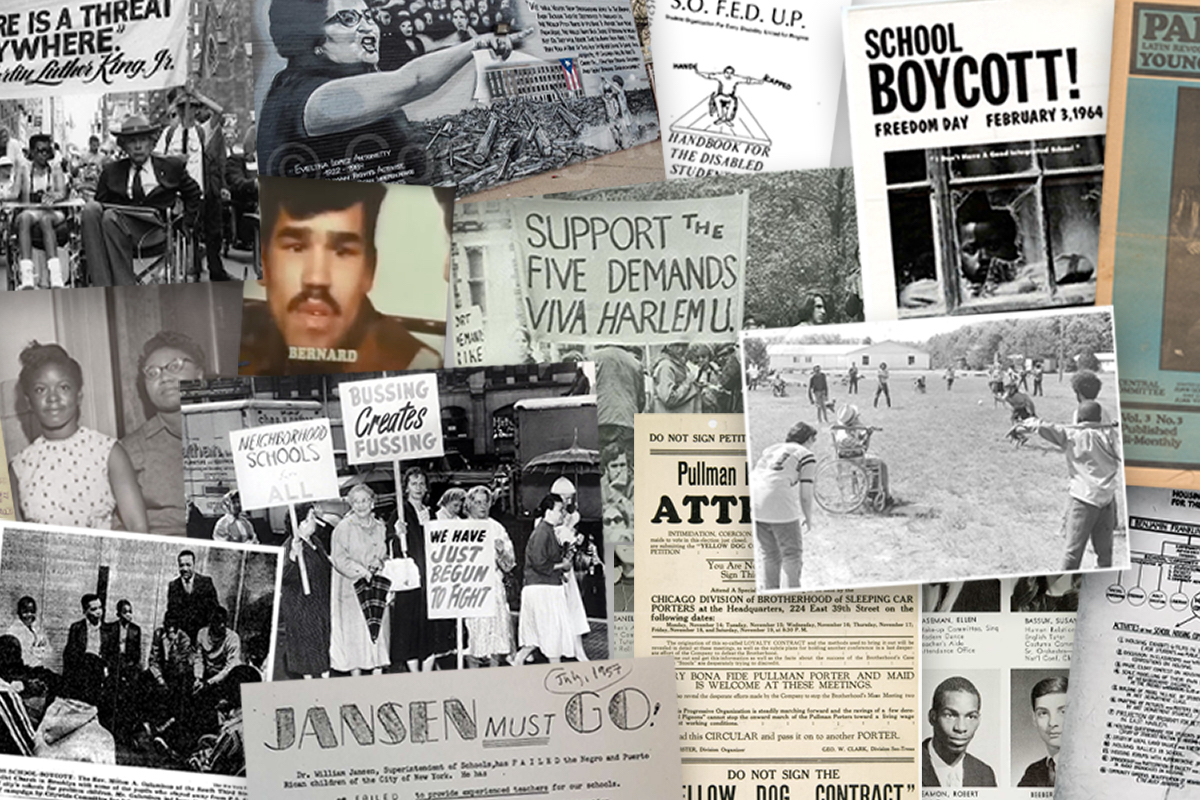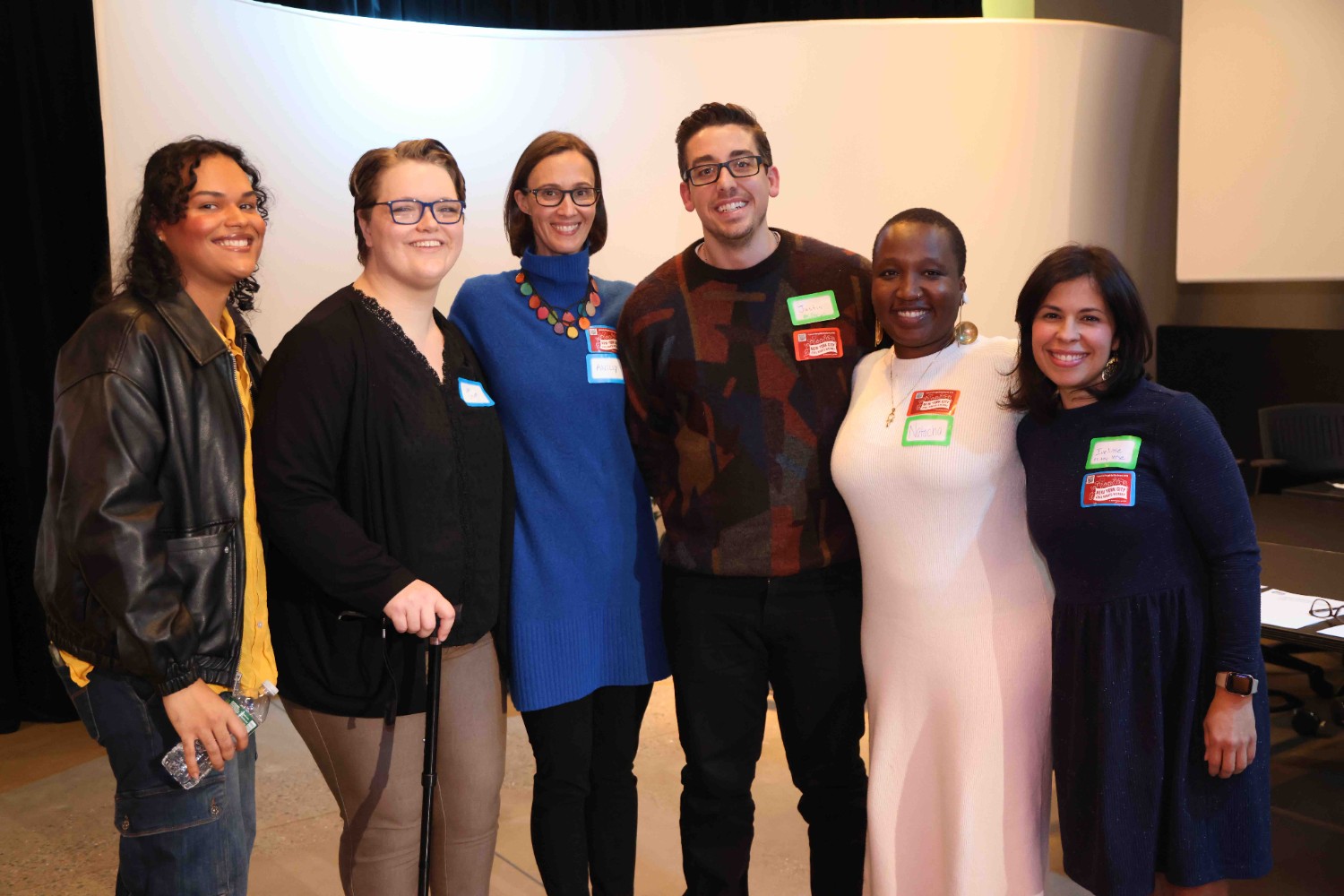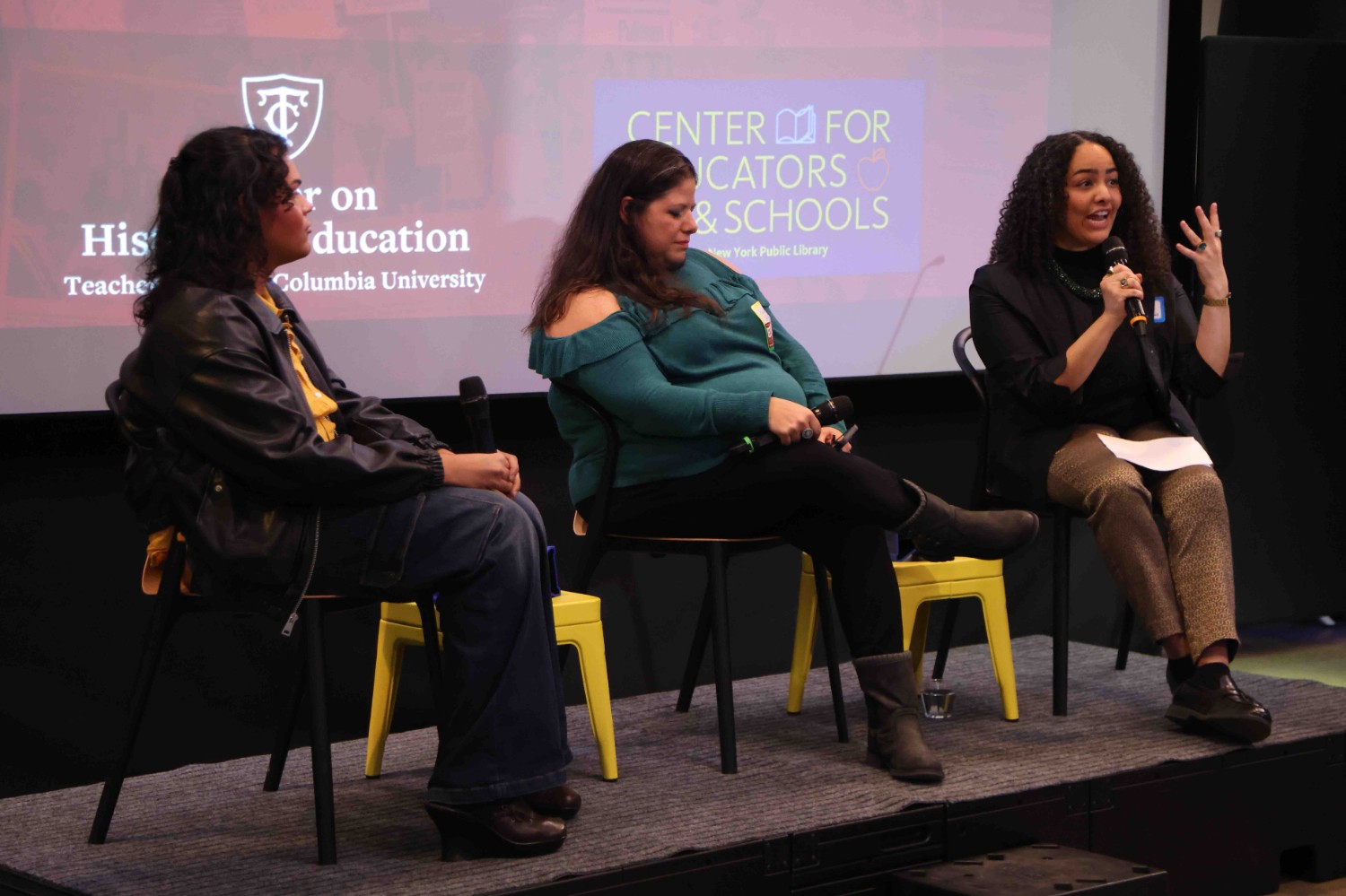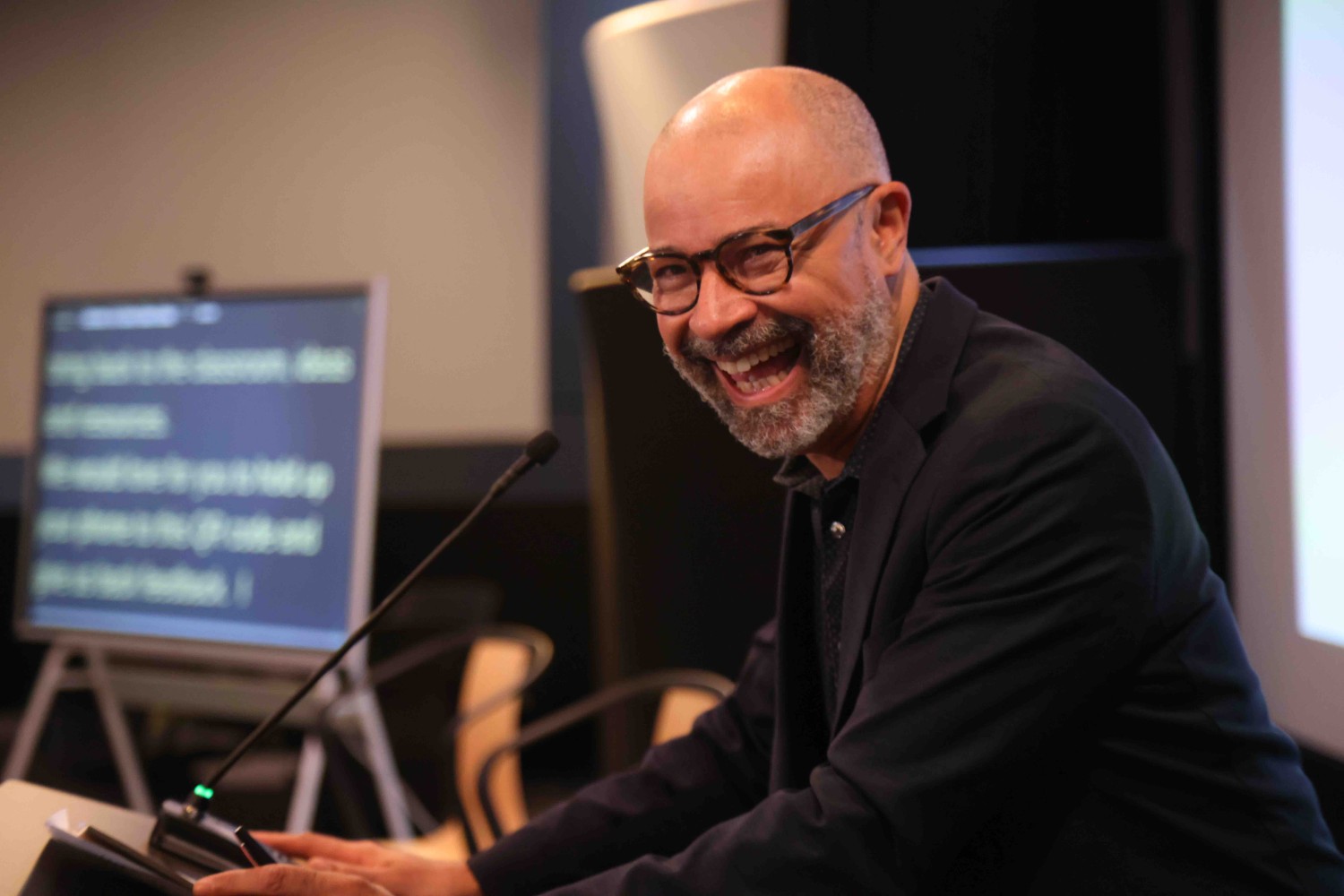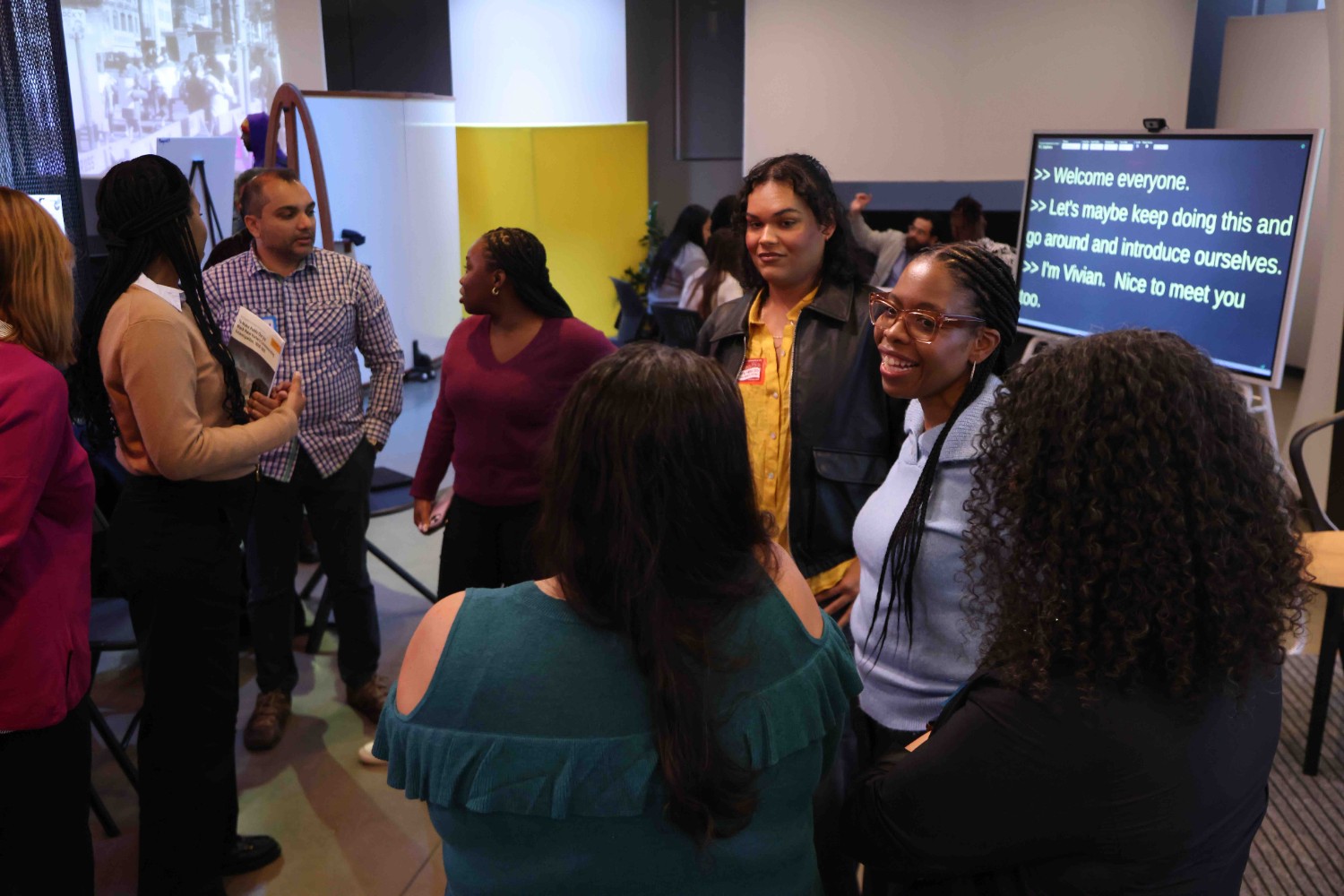Local history comes alive for New Yorkers of all ages in the form of the NYC Civil Rights History Project, a collection of free resources showcasing efforts for racial and disability justice in education released to the public this fall. Produced by TC’s Ansley Erickson with co-directors Brian Jones, Jessica Murray, and Jeanne Theoharis alongside a diverse research team from a variety of institutions, the Project personalizes history in the form of more than 100 primary sources as well as lesson plans and close reading video examples.
The ongoing Project is a culmination of more than four years of work and will serve as an invaluable resource in making histories of education accessible to all, instead of keeping that knowledge “locked up inside the academy,” says Erickson, Associate Professor of History and Education Policy and co-director of the Center on History and Education. For Erickson and fellow champions of this work, like New York Public Library’s Center for Educators & Schools, the NYC Civil Rights History Project also aims to unveil the hidden history of everyday Black, Latine and disabled New Yorkers who fought for better educational opportunities.
SUNY New Paltz student CJ Conglio does a close reading of "S.O. F.E.D. U.P. Handbook for the Disabled Students of Brooklyn College, CUNY" (Video: NYC Civil Rights History Project, made in partnership with the Digital Futures Institute )
“Being able to see yourself in the past, see the resistance — especially in education in schools and in a segregated system — [is] important because a lot of the narratives isolate you from history,” says Nelly Luna (they/them), co-founder of youth activist group Teens Take Charge and former TC research fellow who was a key catalyst for the Project’s development.
The Project aspires to demonstrate how culturally-responsive pedagogies can transform classrooms, fostering deep engagement and understanding among students. For history classes, sharing more stories of marginalized people can reaffirm the humanity of students of color and create a more inclusive classroom. These stories are especially critical in the current political climate defined by battles about which history is allowed to be taught. But with limited time and resources, teachers need support to build these lesson plans.
In an attempt to foster inclusive and engaging classrooms, the materials offered by the NYC Civil Rights History Project will “help address the persistent absence of locally-relevant Black, Latinx, and disability history in curricular resources,” explains Erickson. “Material that resonates with and reflects what students know about their own communities and gives them the opportunity to learn more is crucial.”
Recognizing how social justice work can spark a passion for learning, architects of the Project emphasized primary sources to build strong connections to the past. “There's nothing like seeing [historical documents] for yourself, and that encounter puts students in the role of author of ideas about the past,” says Brian Jones, a longtime collaborator of Erickson and Director of the NYPL Center for Educators & Schools. “That's another grounding for my collaboration with Ansley. Part of my charge at the New York Public Library is to activate the archives and help teachers use them.”
Building on Erickson’s long standing Harlem Education History Project, development of the NYC Civil Rights History Project required intense collaboration. NYC community members suggested the Project and it drew upon the expertise of academics, local education activists, disability advocates, and K-12 teachers who met monthly for more than two years. The needs of teachers and community members especially influenced the Project’s outcomes. Through TC’s Zankel Fellowship, the research team piloted materials in classrooms to understand how teachers would formulate lessons from the materials and how students respond to the documents, which can bring up some very painful realizations.
Judy DeRosier, a doctoral student in the Social Studies Education program and researcher for NYC Civil Rights History Project who spent over 15 years teaching in classrooms, noted that when she was a NYC educator “there weren't any opportunities to really highlight folks who have done work…making changes for civil rights'' because they weren’t included on the curriculum. That lack meant that when DeRosier’s Black and brown students asked to learn about figures they could relate to, there was little room to meet those requests. As such, in her scholarship DeRosier wants to make space for Black and brown children to learn about “regular everyday folks who love their children and who believe that they should be educated and given the space to be all that they can be,” she says.
Beyond fostering an inclusive classroom, learning about everyday advocates for justice in the past can inspire activism in the present, as exemplified by Luna. Having access to primary sources and learning about New Yorkers fighting against the same systems of oppression that Luna was grappling with was an invigorating experience that inspired them to organize for political advocacy.
The research team is currently seeking to spread news of the launch as widely as possible, leveraging the reach of the NYPL Center for Educators & School as well TC’s alumni networks and the Office of Teacher Education. Looking toward the future, the team seeks to make room on the curriculum for locally-relevant histories and Erickson hopes that the Project is a valuable resource for “helping teachers think about who's there, what communities they're serving, what the legacies of those communities are and how their classrooms can be connected to those.”
